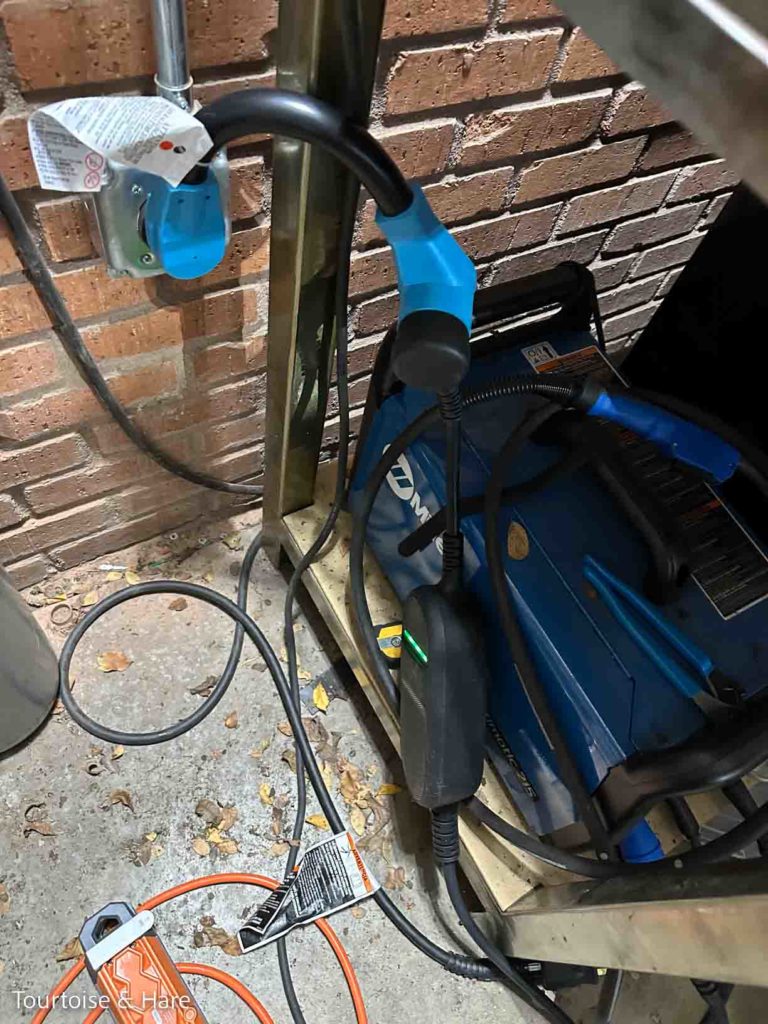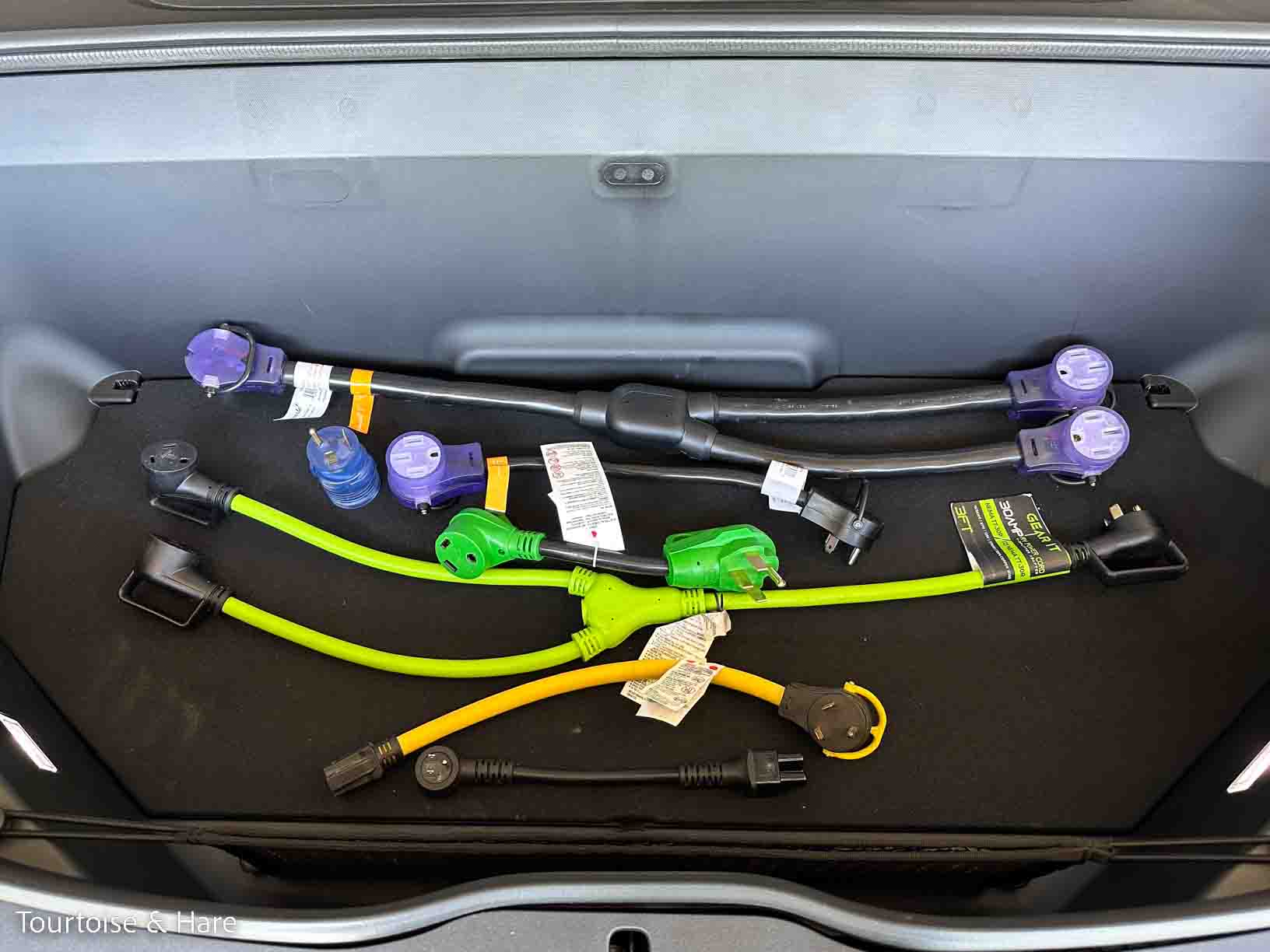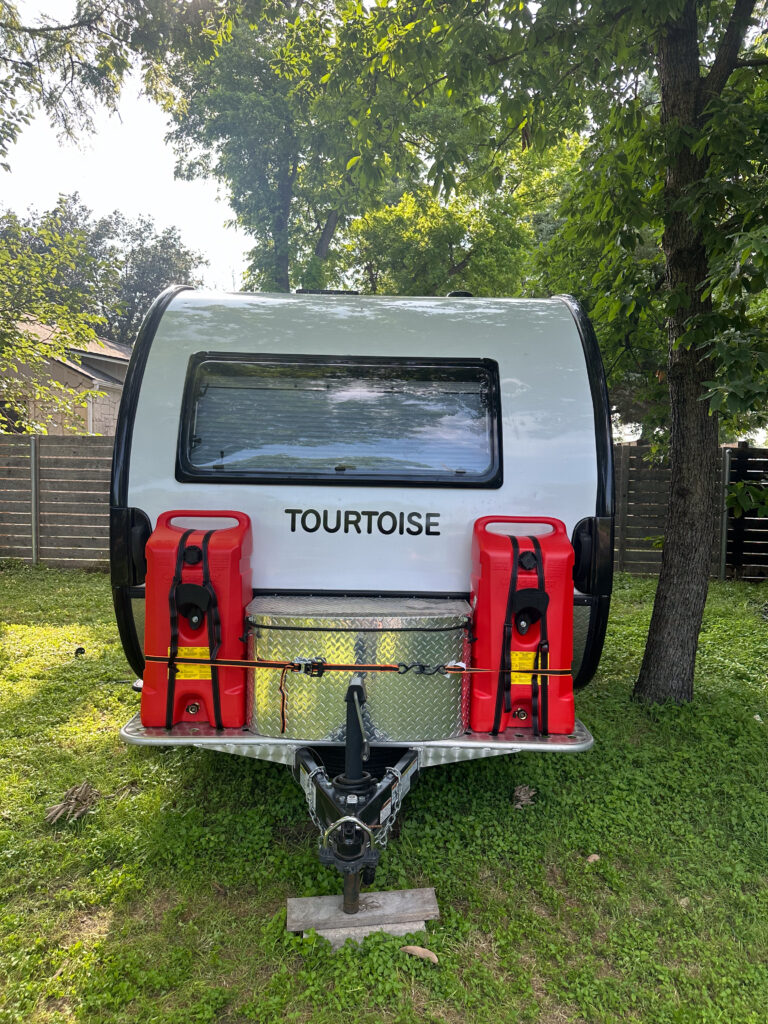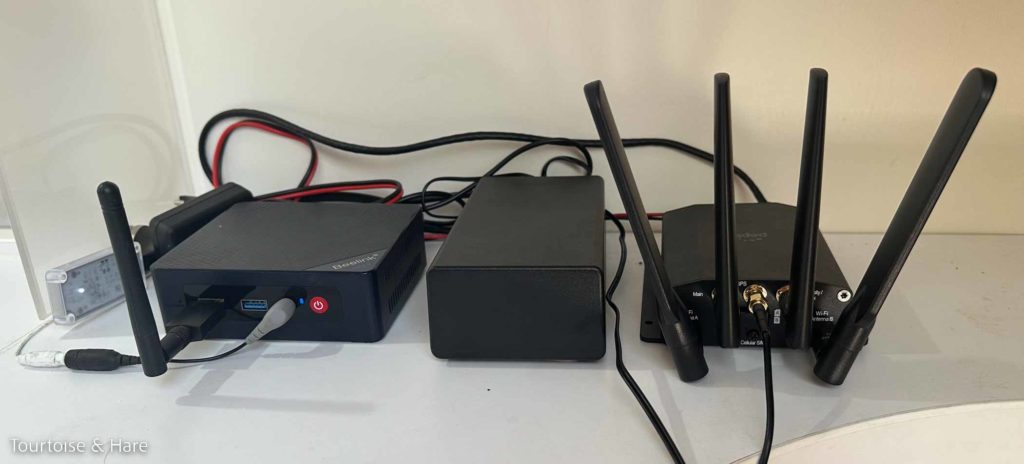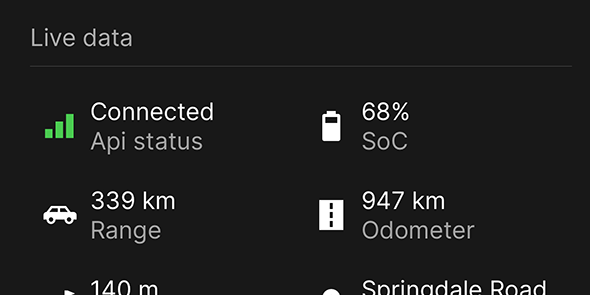We just did a trip to Mother Neff State Park, which we discovered on the way there is the oldest State Park in Texas. Did you know that Texas State Parks were originally envisioned as glorified rest areas for car tourists? That the first Texas State Park was made from land donated by the Governor’s Mom? Ah, Texas, where public spaces have never been a priority…
There’s been a lot of flood damage to the park in recent years, which has caused them to close the old camping loop and build a brand new one with electric sites with both 50 Amp and 30 Amp connections. After our charging adventure at Purtis Creek State Park, we thought it would be a good idea to test out some in-park charging.
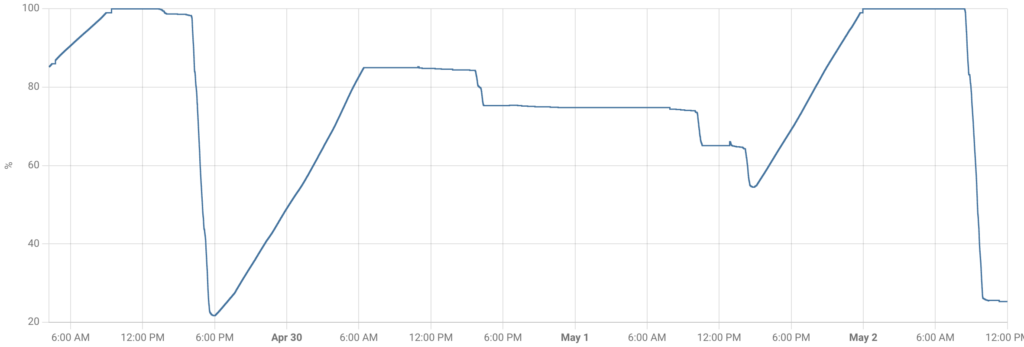

The Rivian’s mobile charge cable comes with two plug ends, a NEMA 5-15 (standard household 3-prong) and a NEMA 14-50 (the usual plug for large RVs). Our Tab 400’s cable is a TT-30 (the usual plug for small RVs—the TT is for Travel Trailer). As we discovered at Purtis Creek, RV adapters for TT-30 to 14-50 aren’t wired the way EVs expect. So how do we power both?
The Best Option: 14-50 AND TT-30
Happily, Mother Neff park had both 14-50 and TT-30 outlets (and a couple of 5-15s) on separate breakers! This makes things simple: plug Hare into the 14-50, plug Tourtoise into the TT-30 (there’s a surge protector shown here). In practice, we got about 30 Amp charging, which at 240 Volts meant 7-8 kW, which is roughly 15 miles of charge per hour using Rivian’s estimates. That would fill the battery from 0% in under 20 hours, or from 30% full in 14 hours. Pretty good for an overnight stop.
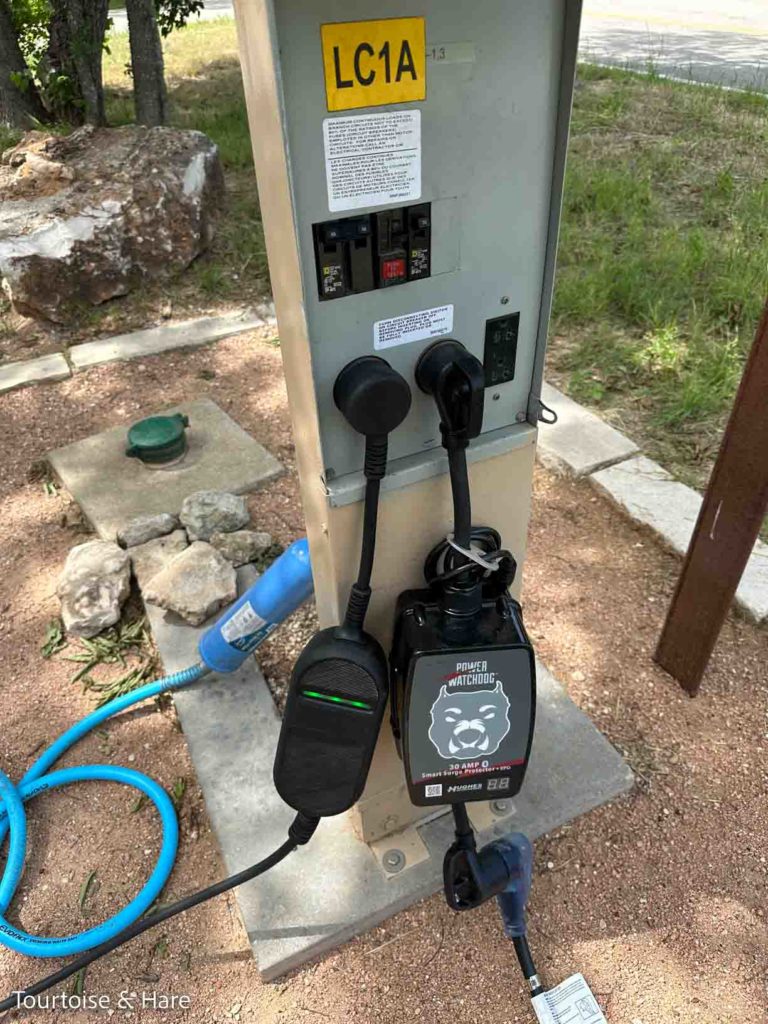
Second Best: 14-50 Y-adapter
What if we only had a 14-50? Well, we brought a Y-adapter that lets us plug in the Rivian charger to one side of the Y, and use a 14-50P to TT-30R adapter (P is for Plug, R is for Receptacle) to power the trailer. The Power Watchdog Surge Protector lets us monitor how much the trailer is drawing (which is not much, even with the water heater for the shower), so we could set the Rivian’s charge rate accordingly. To keep things safe, we aimed for only using 80% of the rated 50 A for the circuit. Because this is still a 240 V setup, the charge rate is still good: 6-7 kW.
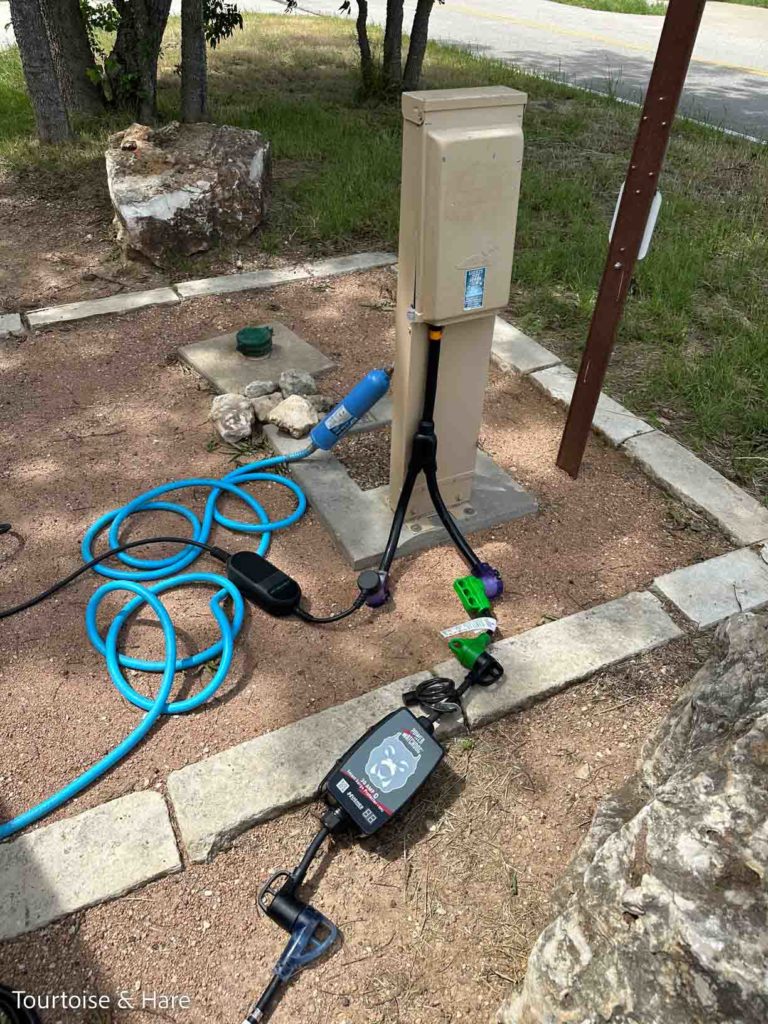
Third Try: TT-30 Y-adapter
Okay, what if we only had a TT-30, like at Purtis Creek. We brought a TT-30 Y-adapter for that. In this case, it’s the Rivian that needs the plug adapter: TT-30P to 14-50R, wired for an EV not an RV. Again, we’ll want to make sure the Rivian doesn’t draw too much power. At 120 V we were getting about 3 kW, or around 6 miles of charge per hour. Getting from 30% to full would take around 32 hours. Definitely doable on a multi-day stop.
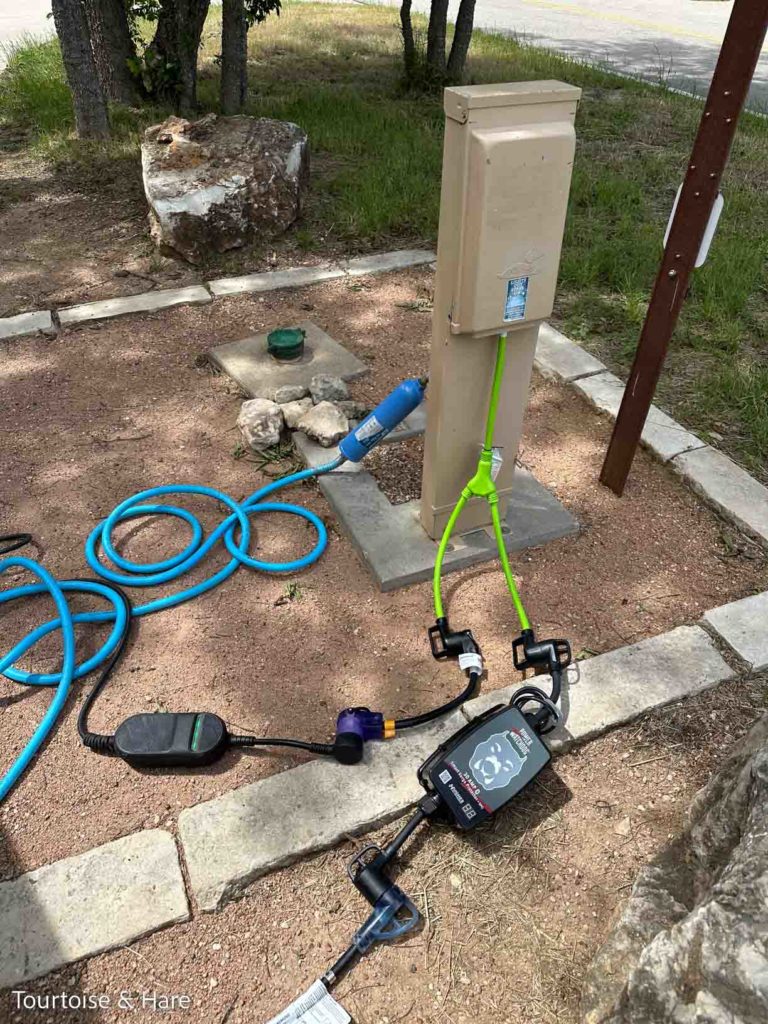
Uh-oh: 5-15
If the campsite had only had 5-15 outlets, we could have plugged the Rivian into one of them and gotten enough power to limp to a charger… maybe. We didn’t try that in Mother Neff, but at Purtis Creek, that tripped the breaker, no matter how low we set the charging rate on the Rivian.
Luckily (well, by design), we arrived at the park with enough charge to get Hare (not towing Tourtoise) back to the L3 charger in Waco, if we’d needed to. Making sure we arrive with enough charge to make it out is definitely a priority now that we’ve almost gotten stuck.
Bonus: Home charging
At home, I have a 240 V circuit for my welder. It has a 6-50 receptacle, but the circuit is actually only 30A, so we plug in a 6-50P to 14-50R adapter and make sure the Rivian charges slowly enough to not trip the breaker. Pro tip: to make the Rivian always charge at a lower amperage at home, set up a schedule that covers all 24 hours with the desired rate.
